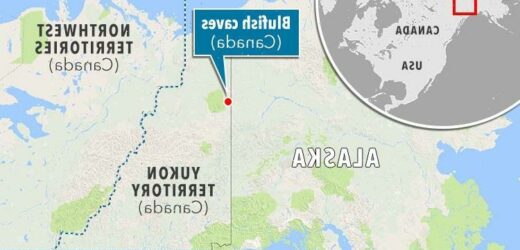SCIENTISTS have discovered an ancient "place of refuge" which could prove humans moved into North America 10,000 years earlier than previously thought.
Bones discovered in a cave in the Arctic fringe of Canada show that cavemen and women moved into the area some 24,000 years ago, boffins claimed.
The Bluefish Caves, in sparsely populated Yukon, contain a number of animal bones bearing marks which could only be caused by human tools.
Experts from the University of Montreal claimed the ancestors of Native Americans lived in the area, known as Beringia, during a period called the Last Glacial Maximum, when ice sheets covered much of Europe and North America.
Ariane Burke, a professor from the university's department of anthropology, said: "During the Last Glacial Maximum, Beringia was isolated from the rest of North America by glaciers and steppes too inhospitable for human occupation to the West.
"It was potentially a place of refuge.”
The Bluefish Caves are located on the banks of the Bluefish River near the Alaska border and were first excavated between 1977 and 1987.
This dig led archaeologist Jacques Cinq-Mars to claim the controversial claim that humans had lived in the area some 30,000 years ago.
Doctoral student Lauriane Bourgeon decided to test 36,000 bone fragments from the site to once and for all prove his claims.
She found that 15 bones "revealed undeniable traces of human activity", whilst another 20 showed "probable traces of the same type of activity".
The oldest fragment was a horse jawbone which bore the marks of a stone tool which was probably used to remove the tongue.
Related Stories
CAVE BLING Cavemen really DID wear bones through their noses, say archaeologists
Cavemen really DID wear leotards made from the skin of fierce lions – and hunted them to extinction in Europe
Bones found at Stonehenge show cavemen loved their pet dogs as much as modern Brits
Monkeys may have helped our species become civilised by teaching cavemen one important trick
"Series of straight, V-shaped lines on the surface of the bones were made by stone tools used to skin animals," Burke added.
“These are indisputable cut-marks created by humans.
“Our discovery confirms previous analyses and demonstrates that this is the earliest known site of human settlement in Canada.
"It shows that Eastern Beringia was inhabited during the last ice age.”
Source: Read Full Article








